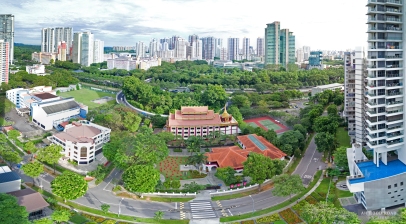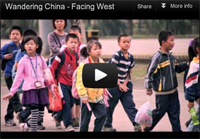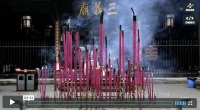Headlines and titles may inadvertently seem skewed as it frames thought. Like a mental snapshot, it can oversimplify or at its worst, misdirect (in the wider ecosystem of political rhetoric, this looks part of the inadvertent Sino-US leadership transitional exchange of shaping mind-share). I think if one reads on, this article can be taken rather positively.
The recent movement of these professional, educated Chinese across the world can further help build bridges where mass media glosses over. In others ways, it is not a bad thing it is an educated, professional group that carries Chinese thought extending outwards. Where most of all the previous batches who left largely by push factors or war, the case now is markedly different.
In Singapore’s case, the overarching narrative, its Chinese are largely descended from craftsmen and coolies. As Lee Kuan Yew once pointed out – in response to Deng’s question if China would ever succeed looking at how Singapore successful hybridization of central power with Confucian meritocracy at the forefront and free market capitalism with its socio-cultural tradeoffs.
Indeed, on closer examination, the numbers today who move due to socio-economic pull factors are still small in percentage terms. As reported by this article, even fewer (perhaps few would admit) regard political reasons as the chief factor.
Over millennia of movement the number of overseas Chinese number at 55million . That cumulative number makes it as large as most medium sized countries so they are not insignificant either. Change your lenses change your sight.
Perhaps looking at the bright side can be a decent point of view. I know a few Chinese aged between 19 and 35 now residing in Australia. We have been on camping trips far out in the bush carrying our own water without much fuss, Others I know, by competing against in futsal teams in the local leagues, many others love dressing up for the Melbourne Cup day.
Some may find it hard to empathize the competition in China because they may not have set foot in China, or met the Chinese on the ground. 9 to 10 million compete for a spot in university a the college examinations each year. Those who don’t make the grade fight for very little. A 2 to 3000RMB monthly salary, hardly enough to cover rent for a decent sized rental home is norm for those striking out.
Have personally known a few bright hardworking of China’s digital natives who just couldn’t make the grade despite sometimes seemingly overboard preparations. Such is their reality. Many have integrated well here, Melbourne thrives with a former mayor who is Chinese, and many live just like the Aussies do adding to the multicultural social fabric down under.
In monetary terms, they automatically make six times the amount due to the strong Aussie dollar with far less working hours with plenty of time for family and other pursuits. Many of them make efficient workers who get things done so promptly it is hard for work to keep up. This is not representative across the board of course. For every one that excels there potentially is another who just wants to get by. But I digress.
In return as well, for those who work with or live in communities with Aussies, they become a real life conduit for Aussies to understand China in its own terms too. Its cuisine has proven immensely popular here with all 8 major branches of Chinese cooking represented those from all corners of China proving extremely popular – right down to Sichuan hotpot, a regular in winter for many. It then moves onto the locally adapted local favorite the dim sim (does not exist in real Chinese culinary palates I think), to the classy Beijing Hutong themed Xiao long bao restaurants.
I meet many of them at vineyards, organic farms, strawberry farms and fishing spots. About half happily drive the Aussie-made Holden because it feels right to drive a locally made car in Australia. Just the tip of the iceberg. I think it is a great thing. Overseas Chinese who mingle well with host environments naturally make vehicles of the wider Chinese culture and national identity. It also shows like that others, there are those who seek out a balanced life too where work doesn’t dominate all their headspace.
More importantly, they help others see we can all get along, share other ideals and worldviews. Interestingly too, in the field of diasporic identities, that overseas Chinese end up being all too aware of their own Chineseness is common across most other diaporic groups too – from the Greeks and Italians I know here – they celebrate their identity with zeal and vigour.
Not all assimilate or adapt of course. It would oversimplify to say all enjoy life here. Many of them feel the pace of life is a little too slow. I have also known a fair few who can’t wait to return, but do so at least, with a broadened outlook and first hand experience of another way of living.
They return with a first hand glimpse of a rather liberal, western society where the channels to exercise one’s right to voice, its deferences shows other paradigms exist successfully elsewhere. When they enter the work force, they are valued for their more globalised outlook, with a practical experience of using English in school and at work, the culture, history, norms and processes. And this is celebrated in the mass media there in game shows – this comes with Chinese subtitles only.
And 非你莫属 is just one of many state funded shows out there. It features distinctly American style sports commentary and a debate that involves mentors, employers, the host and the job seeker. They reserve the right to say no at the end of their final round offers, and negotiate outside the show. And its the wide range of jobseekers on offer, from the clerk to driver, to partner or director raking in six figure RMB a month.
Cultural capital has been identified as a pillar industry and the production values are apparent, it has taken care to weed out what was deemed low culture reality tv and today the focus on more productive shows like this is ramping up. This employment-seeking show emphasises the need for more internationally minded employees in their midst. This episode talks about it is unavoidable now China has risen that it needs an upgrade in a globalised mindset. It actively advertises for Haigui 海归; pinyin: hǎiguī on foreign television. A fair few of them seem genuinely proud in returning to contribute.
This is highly recommended and it gives a glimpse of how the Chinese are democratising on their own terms, in their unique own way. The adaptations from American and European game shows are obvious at the onset, but their process are far more intricate and involve far more depth of discourse) that see many returning candidates have the right to take questions, present competently, then proceed into the final rounds where they exercise the right to eliminate and haggle salary with interested employers.
As a student of media, it is important to discern the agenda setting potential of media. Although the political economy of the mass media no longer dominate the spectrum of messages as they used to, transnational media corporations remain nevertheless powerful.
As such, we consume, at best, selected, well-informed, well intended, rationalized textual and visual constructions of the macro, but never of the real thing until all five senses are fed. Even then, sometimes the right messages don’t go right through. A lover’s tiff for example, where misreading of body language triggers a chain of cascading misunderstandings is one most can relate with. The primacy of first hand experience is equally, important to get a full picture – to try to make the best of the information available, to more accurately inform opinion.
The movement is not all one way. With economies stagnant in the West and job opportunities limited, the number of students returning to China was up 40 percent in 2011 compared with the previous year. The government has also established high-profile programs to lure back Chinese scientists and academics by temporarily offering various perks and privileges. Professor Cao from Nottingham, however, says these programs have achieved less than advertised.
– – –
Wary of Future, Professionals Leave China in Record Numbers
by Ian Johnson
Source – New York Times, published October 31, 2012

Lee Yangang and his wife, Wang Lu, emigrated to Sydney, Australia, from Beijing last year, saying they felt insecure in China. Source – New York Times, 2012
BEIJING — At 30, Chen Kuo had what many Chinese dream of: her own apartment and a well-paying job at a multinational corporation. But in mid-October, Ms. Chen boarded a midnight flight for Australia to begin a new life with no sure prospects.
Like hundreds of thousands of Chinese who leave each year, she was driven by an overriding sense that she could do better outside China. Despite China’s tremendous economic successes in recent years, she was lured by Australia’s healthier environment, robust social services and the freedom to start a family in a country that guarantees religious freedoms.
“It’s very stressful in China — sometimes I was working 128 hours a week for my auditing company,” Ms. Chen said in her Beijing apartment a few hours before leaving. “And it will be easier raising my children as Christians abroad. It is more free in Australia.” Read the rest of this entry »
Filed under: Back to China, Beijing Consensus, Charm Offensive, Chinese Model, Communications, Culture, Democracy, Domestic Growth, Economics, Finance, Government & Policy, Greater China, Influence, International Relations, Lifestyle, Mapping Feelings, Media, New York Times, Peaceful Development, Politics, Public Diplomacy, Social, Strategy, Tao Guang Yang Hui (韬光养晦), The Chinese Identity, Trade, Yuan, Australia, China's Rise, culture, Economics, Education, Environment, Identity, International Relations, Politics, Propaganda, Singapore, U.S.
















The Sharing Circle